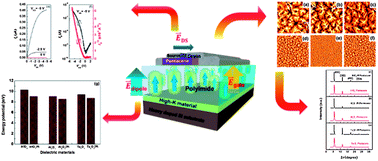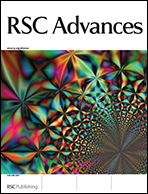Gate field induced ordered electric dipoles in a polymer dielectric for low-voltage operating organic thin-film transistors
Abstract
The development of low voltage-operating organic thin-film transistors requires high-dielectric constant (high-K) materials for the device's gate dielectrics. The surface properties of these high-K materials must match those of organic semiconductors. A modification material coated on high-K dielectric is needed, and polyimide (PI) is a promising modifier to reduce the surface energy and the interface trap states (in the level of 1010 cm−2 eV−1) of the high-K dielectrics. In this study, surface characteristics of the dielectrics were identified and interface analyses at the dielectric/organic semiconductor interface were conducted through combined electrical force


 Please wait while we load your content...
Please wait while we load your content...